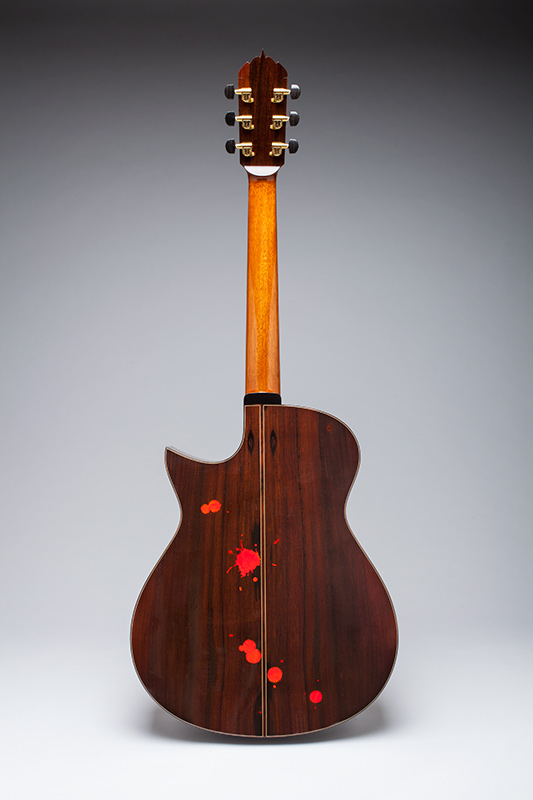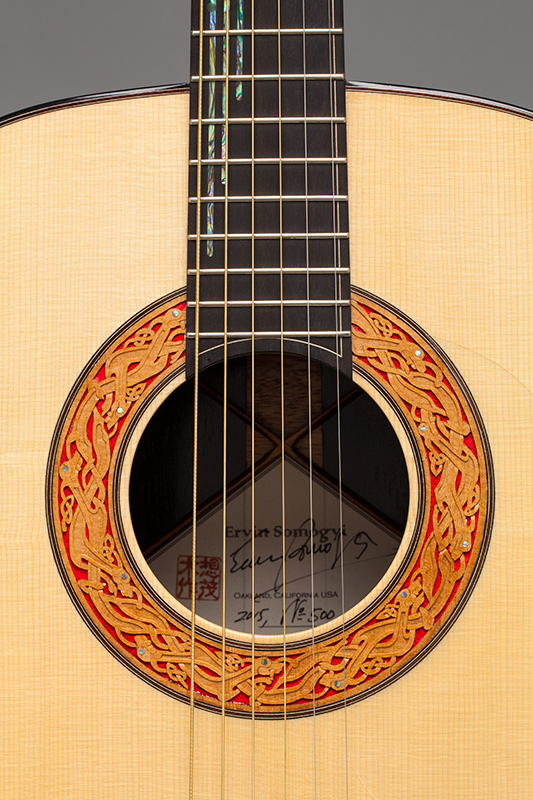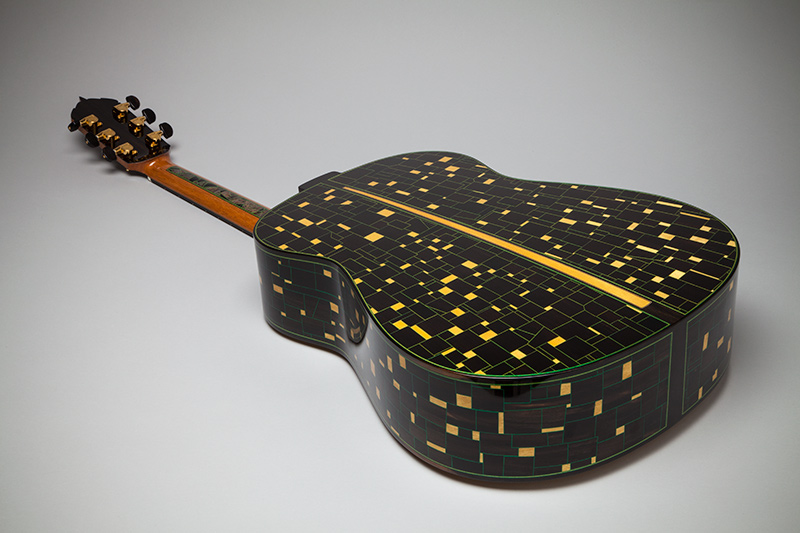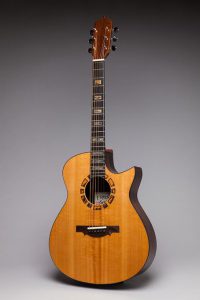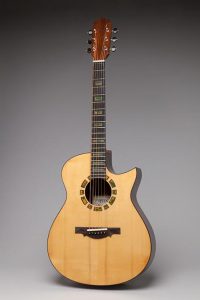What I’ve Been Up To: November ’17 to March‘18 – [2/4]
March, 2018
Hi again:
I was describing the rumbling growth of the guitar market in Korea and China. You can’t have growth and economic bubbles without rich people’s gambling speculatively on the chance of getting even richer. It’s beginning to happen in China now; I don’t know what they want to call themselves politically, but their economy is Capitalism on steroids.
Socialism and Communism? Hah! No way, José.
China has already had one real estate bubble burst, and no doubt more things like that will happen because no one is doing anything to keep any of them from happening. It’s like what happened in our own bubble of 2008 in which several million people lost their homes because of the criminal depradations of our own Banking, Lending, and Home Mortgage institutions . . . and no one has ever been held accountable for it . . . and has been continuing since. We all know that those wily Orientals (shades of Earl Derr Biggers, Charlie Chan, and Fu Manchu!) are great at copying things. Well, they’re copying Capitalism with a vengeance.
Anyway, I am beginning to be invited into this new and growing market . . . which I think I’m managing to make sound quite distasteful. Dealers (who are attending the NAMM show I described earlier) are eagerly and hopefully approaching me and other luthiers like me . . . like . . . uh . . . like moths to a sock. In my case this is because I am prominent in the world of guitar making; they want to have my guitars because to carry merchandise from a prominent Western luthier will get them an edge with publicity and sales. I think they’d promote my guitars as being the best, exotic, expensive, superb, and almost magical . . . and will probably help cure baldness and impotence.
As part of this thrust, I’m being interviewed and filmed a lot these days. Part of this interest is coming from new Chinese guitar magazines (there’s even a Chinese edition of Fingerstyle magazine!). But also, as I’m part of the rapidly aging American lutherie community (and that includes makers of guitars, banjos, mandolins, violins, etc. etc.), I am being interviewed and filmed and recorded and being sent questionnaires by American institutions, museums, archives, etc. that want to preserve pertinent historical record.
I mean, once we’re dead we are no longer available to be interviewed and allowed to tell our stories. (Where were these people when I was younger and needed the attention???). Anyway, I’m spending more time than ever before receiving visitors who have these projects to carry out.
– – – – – – – – – – – – – – – – – – – – – – – – – – – – – – – – – – – –
CHINESE GUITAR FACTORIES:
The Chinese market is very competitive. There are hundreds of guitar factories in Guangzhou, in Southern China. It’s a huge city that is made up entirely of factories and dormitories. They make EVERYTHING, including guitars.
I’ve been approached by two of their factories to this point, as well as two distributors. One of the factories has paid me for a consultation. This is a pretty impressive outfit; they are young, smart, eager, motivated, well funded, and focused. They showed me pictures of their facility: it’s impressively large. The factory floor is meticulously clean, and dotted with state-of-the-art computer-operated machinery that cranks out (they told me) 125,000 guitars a month. Wow. These are mostly $100 and $200 guitars, but (did I mention?) the market is huge and growing. And they are eager to start production of a limited number of handmade guitars that were better. That’s what they wanted to consult about.
A number of my colleagues already do business and/or consult with companies in China. They have contributed guitar and inlay designs, and have helped teach the Chinese workers how to make and assemble guitar parts.
– – – – – – – – – – – – – – – – – – – – – – – – – – – – – – – – – – – –
SIDEBAR:
Speaking of a huge and growing market, I was listening to an interview on the radio recently, with an American developer of golf courses; he was selling golf courses to the Chinese. The interviewer commented that golf wasn’t really a Chinese game, so he wondered how much business this guy could do. He replied (quote): “well, essentially zero percent of the Chinese play golf, but zero percent of one-and-a-half billion is still a pretty good number”. No, I didn’t make that up.
– – – – – – – – – – – – – – – – – – – – – – – – – – – – – – – – – – – –
THE GREATER ECONOMY
From what I’m seeing, it is looking as though China will be the dominant economy in the world in twenty or so years. The sheer sophistication and scale of the productive machinery that I’ve gotten a peek at is stunning: robotics, laser machinery, CNC automation, etc. And what isn’t automated is attended to by handwork carried out with the focus of a sweatshop on steroids; factory employees put in incredible hours to meet inflexible production quotas. The work ethic is unreal.
For the time being, as I said, China is only beginning to find out and learn about and appreciate handmade guitars. There is a lot of new money there and rich Chinese are happy to buy expensive American things. They’ve started with American cars; they are inching toward guitars. There is, as in the U.S., a rapidly developing 1%-vs.-the-99% of their very own, although, no one really talks about that. They just report Economic Growth statistics baldly, in terms of abstract things like market penetration . . . it all sounds evocative of the Wisdom of the Ancients, and just as hard to interpret or understand.
It is one thing to say things like “China is modernizing and growing at remarkable speed”. It is another to have some understanding of what that means.
– – – – – – – – – – – – – – – – – – – – – – – – – – – – – – – – – – – –
SOME REALLY AWFUL STUFF; YOU MAY WANT TO SKIP THIS PART
The factory I cited above, that is cranking out 125,000 guitars a month, is one of the bigger and more sophisticatedly tooled up ones. But it is one of hundreds. Can you imagine the sheer amount of wood that is gobbled up in the making of these instruments? They’re mostly plywood, and they look very clean and pretty. But My God . . . that’s a lot of precious wood being turned into these things.
A LOT of wood.
I’ve recently become aware of two documentaries about current China that have had an impact on me. One is titled “Manufactured Landscapes” and the other is “Racing to Extinction”. They’re really horrible. One of them features the city of Guangzhou, which is a big city made up of factories and dormitories. There are factory complexes larger than football fields in which thousands of young Chinese men and women slave away at work stations, all day long, every day, assembling parts and pieces to all the electronic goods that we buy — from on-off switches to the equipment that will have those on-off switches. This is not skilled, meaningful work. It is capitalist piece-work. All of these products will sooner or later wind up in a Chinese, American, or European landfill. Actually, probably European or American; many Chinese factories are for export only. You can’t get what they produce, in China.
There are HUGE MONTAINS OF JUNK outside another city whose name I can’t pronounce — very largely electronic waste, but really including everything made of plastic and metal and glass, that has been shipped to China from the U.S., and probably Europe. China is one of our dump sites, and has been for a while. Africa has been another. And I’m not kidding about the mountains; they’re unbelievable in size; all the millions of computers and electronic stuff we get rid of every year wind up there. They’re made to not be fixable, and we don’t have the capacity to absorb such amounts of recycled waste; the current watchword is N.I.M.B.Y.
Well, see, we don’t actually recycle it; we export it; the Chinese recycle it . . . badly and inefficiently and pollutingly. There is footage of Chinese people going through these mountains, looking for this or that to salvage, in very low-tech ways. Yet the scale of the waste from these efforts also staggers the imagination. The cities near these mountains of junk look like recycling yards themselves. There is junk piled up everywhere; in the streets; in the yards; in the fields; in the houses. None of it is under a roof or other cover; it’s all out in the open.
This is the end of part 2; part 3 follows, if you’re interested.
